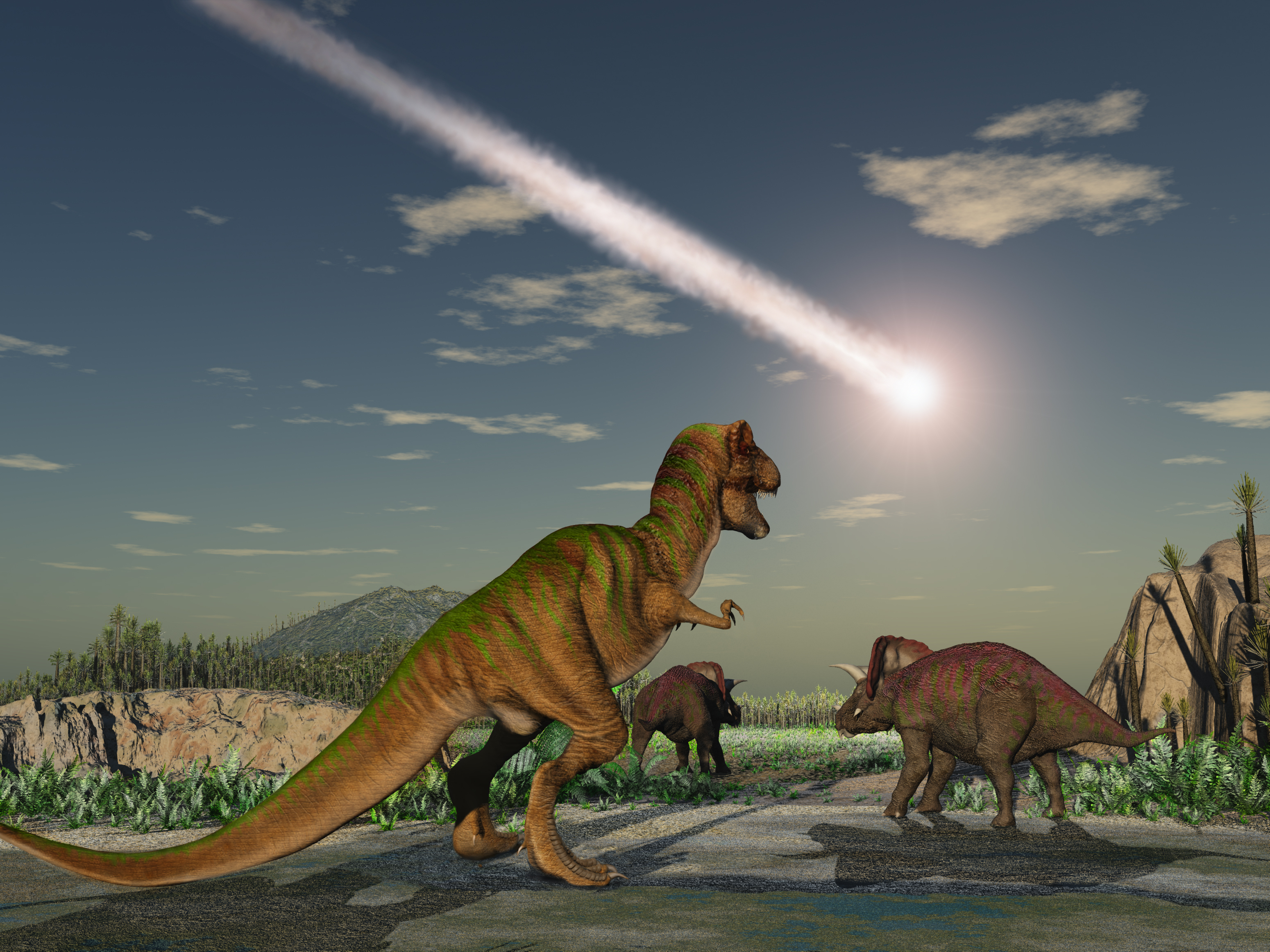Asteroid that wiped out the dinosaurs hit Earth during northern spring, scientists argue

The asteroid impact that wiped out most dinosaurs may have taken place during the Northern Hemisphere's spring or early summer, according to new research on the infamous mass extinction.
The new research hinges on a site called Tanis, located in North Dakota, that an overlapping group of scientists announced in 2019. That work argued that the site's fossilized wildlife died within hours of a large asteroid slamming into the Yucatán peninsula 66 million years ago in what is today Mexico. (Notably, the bulk of the fossils buried at Tanis did not belong to dinosaurs; most come from fishes.)
In the new paper, the researchers argue that those fish fossils also suggest that the impact occurred while the Northern Hemisphere was in spring or early summer, potentially making the event still more devastating to life in that hemisphere.
"This project has been a huge undertaking but well worth it," Robert DePalma, the lead author of both research papers and a graduate student in paleontology at the University of Manchester, said in a university statement.
Related: Why is sci-fi so obsessed with asteroid impact disasters (and how to stop them)?
The extinction itself is famous: The most recent of the five mass die-offs that paleontologists have identified in the fossil record, the extinction marked the end of the Cretaceous period 66 million years ago and wiped out about 75% of the species that lived on Earth at the time.
Scientists continue to debate whether the asteroid impact and its consequences were solely responsible for the extinction. Some argue that massive volcanic eruptions that happened at about the same time may have done the job, or that only both catastrophes in tandem could have made such a mark. Either way, the impact had global consequences.
Get the Space.com Newsletter
Breaking space news, the latest updates on rocket launches, skywatching events and more!
The 2019 paper hailing the North Dakota site's fossils as a legacy of the impact was greeted with some skepticism, in part because a high-profile magazine story broke the news with scant scientific details; according to reporting at the time by Science, some paleontologists also expressed concerns about DePalma's professional practices.
But Tanis is tantalizing because, if the research is correct, it would mark the first site where scientists can see the direct consequences of the asteroid impact on life. (Geologists have studied the Chicxulub crater left behind, of course, but the whole asteroid impact situation really did a number on the local fossil record of the period.)
DePalma and his colleagues wanted to determine whether they could date the Tanis fossils to a specific part of the year. Many of the fossils at the site come from paddlefish and sturgeon species at a range of ages.
Fish bones, coincidentally, display the same type of pattern as the annual rings of trees. Fish bones grow a dark layer in the spring and summer, when the animals have plenty to eat and grow faster; in the fall and winter, a lighter band forms. These two bands also sport different ratios of the chemical flavors of carbon that scientists can distinguish in the lab.
When DePalma and his colleagues looked at the bones this way, they found that the most recent layer, found on the outside of the bones, had formed during a season of plenty.
The researchers also used a synchrotron to analyze trace metals found in the fossils, which scientists can use to determine how developed the animal was when it died. That analysis found that there were both adult and juvenile fish at the site, also suggesting a spring or early summer cataclysm, the researchers determined.
All this makes sense, the scientists argue. Modern species of sturgeon migrate between saltwater in the winter and freshwater in the spring and summer, and Tanis was a freshwater site. The researchers found that insect damage preserved in fossilized leaves and fossils of adult mayflies during the catastrophe also match the seasonal timing they suggest.
"Animal behavior can be a pretty powerful tool," Loren Gurche, a co-author on the study and a graduate student at the University of Kansas, said in the statement. "They all matched up."
The scientists even suggest that a spring impact may have triggered more extinctions in the Northern Hemisphere than in the southern. Species in areas of the Northern Hemisphere with distinct seasonal variations built into their lifestyle, the authors wrote in the paper, would have "vulnerabilities inherent to this time span, which was a period of growth and reproduction for many animals and plants."
Had the asteroid hit Earth six months earlier or later than it did, would more dinosaurs have survived? Would mammals have come to rule the world? There's no way to know, of course.
"Extinction can mark the end of a dynasty, but we must not forget that our own species might not have evolved if it weren't for the impact and the timing of events that saw the end of the dinosaurs," DePalma said.
The research is described in a paper published Wednesday (Dec. 8) in the journal Scientific Reports.
Email Meghan Bartels at mbartels@space.com or follow her on Twitter @meghanbartels. Follow us on Twitter @Spacedotcom and on Facebook.
Join our Space Forums to keep talking space on the latest missions, night sky and more! And if you have a news tip, correction or comment, let us know at: community@space.com.

Meghan is a senior writer at Space.com and has more than five years' experience as a science journalist based in New York City. She joined Space.com in July 2018, with previous writing published in outlets including Newsweek and Audubon. Meghan earned an MA in science journalism from New York University and a BA in classics from Georgetown University, and in her free time she enjoys reading and visiting museums. Follow her on Twitter at @meghanbartels.









